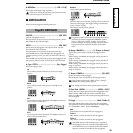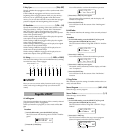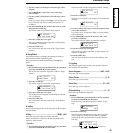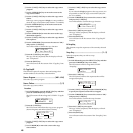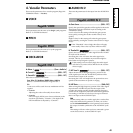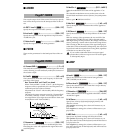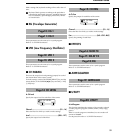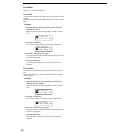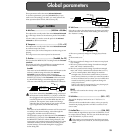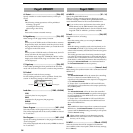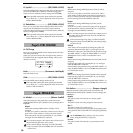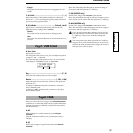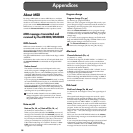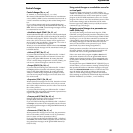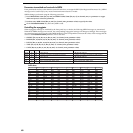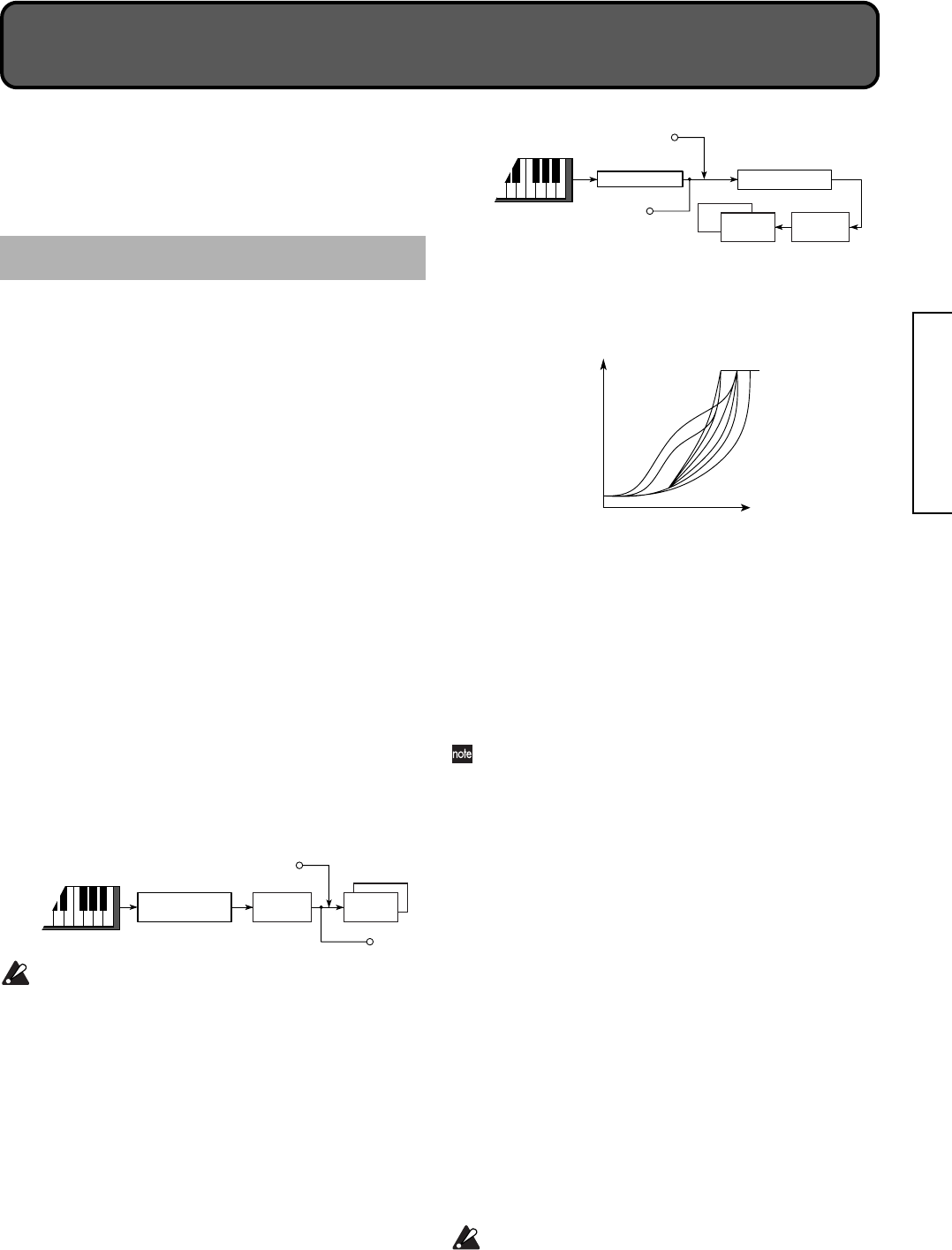
53
Global parameters
These parameters affect the entire MS2000/MS2000R.
To set these parameters, press the [GLOBAL] key. If you
wish to save the settings you make, you must perform the
Write operation (Basic Guide, Edit section p.30).
A: Mst.Tune...................................[430.0Hz...450.0Hz]
This adjusts the overall pitch of the entire MS2000/MS2000R
in 0.1 Hz steps, relative to the reference pitch of A4 (middle
A).
Use this when you need to tune the pitch of the MS2000/
MS2000R to other instruments.
B: Transpose...............................................[–12...+12]
This adjusts the overall pitch of the entire MS2000/MS2000R
in semitone steps (100 cents).
Use this when you wish to transpose to suit the song you are
playing.
The range covers one octave upward or downward.
C: Position ........................................ [PostKBD, Pre TG]
This specifies the MIDI IN/OUT routing inside the MS2000/
MS2000R.
This setting will affect how MIDI data is transmitted and
received, and how arpeggiator data is handled.
PostKBD
Data received at the MIDI IN connector will be sent to the
timbre(s) without being affected by the MS2000/
MS2000R’s internal settings or the arpeggiator.
The data outputed by the keyboard of the MS2000 or the
SELECT [1]–[16] keys of the MS2000R will be converted
by the internal settings, routed through the arpeggiator,
and sent to the timbre(s) and to the MIDI OUT connector.
If you have selected the PostKBD setting, and played
the keyboard (or the SELECT [1]–[16] keys) with both
the arpeggiator and sequence turned on and used an
external sequencer to record the MIDI data that was
produced, the sequence reset method will change
when this data is played back. If you wish to use this
type of application, use the Pre TG setting.
Pre TG
Data received at the MIDI IN connector will be converted
according to the internal settings, routed through the
arpeggiator, and then sent to the timbre(s).
The data that is output by the keyboard of the MS2000 or
the SELECT [1]–[16] keys of the MS2000R will be sent to
the MIDI OUT connector without being affected by the
arpeggiator or by internal settings other than Octave. Data
sent to the timbre(s) will be converted according to the
internal settings, and routed through the arpeggiator
before being sent.
D: Vel.Curve..........................................[1...8, CONST]
Select how velocity (keyboard playing dynamics) will affect
volume and tone. The results of this setting are affected by
the “Position” setting.
1: This curve produces change for strongly played notes.
2, 3:|
4: The normal curve.
5:|
6: This curve produces change even if notes are not played
very strongly.
7: This curve produces little change for medium-strength
notes, and a fairly consistent effect.
8: This curve produces little change for medium-strength
notes, and a fairly consistent effect (flatter than curve 7).
Curves 7 and 8 produce little change for medium-
strength notes, and are thus suitable when you do not
need velocity sensitivity or when you want the sound to
be more consistent; however, these curves are difficult to
control because they produce significant change for
softly-played notes.
Select a curve that is appropriate for your playing style
and the effect that you wish to obtain.
CONST
All notes will sound at the velocity value specified by
“Vel.Value.”
E: Vel.Value................................................[001...127]
This will be displayed and can be set if “Vel.Curve” is
CONST.
All notes will be sounded at the velocity value you specify.
Variations in playing dynamics will have no effect on vol-
ume or tone.
F: AudioInThru..............................................[ON, OFF]
If this is ON, the signal that is input from AUDIO IN 1/2 will
be output without change. This lets you check that the input
to the AUDIO IN 1/2 jacks is correct.
This setting is not memorized by the Write operation.
When the power is turned on, it will always be turned
OFF.
Page1: GLOBAL
SEQ1/2/3
MIDI OUT
MIDI IN
GLOBAL: Transpose
FRONT PANEL: Octave
GLOBAL: Velocity Curve
Timbre 1
Timbre 2
Arpeggiator
Keyboad
SEQ1/2/3
SEQ1/2/3
MIDI OUT
MIDI IN
GLOBAL: Transpose
GLOBAL: Velocity Curve
FRONT PANEL: Octave
Timbre 1
Timbre 2
Arpeggiator
Keyboad
SEQ1/2/3
4
5
Strength
(MIDI Velocity)
ppp
MIN (1)
Velocity
MAX
(127)
3
8
7
6
2
1
fff
(1) (127)
Global parameters



